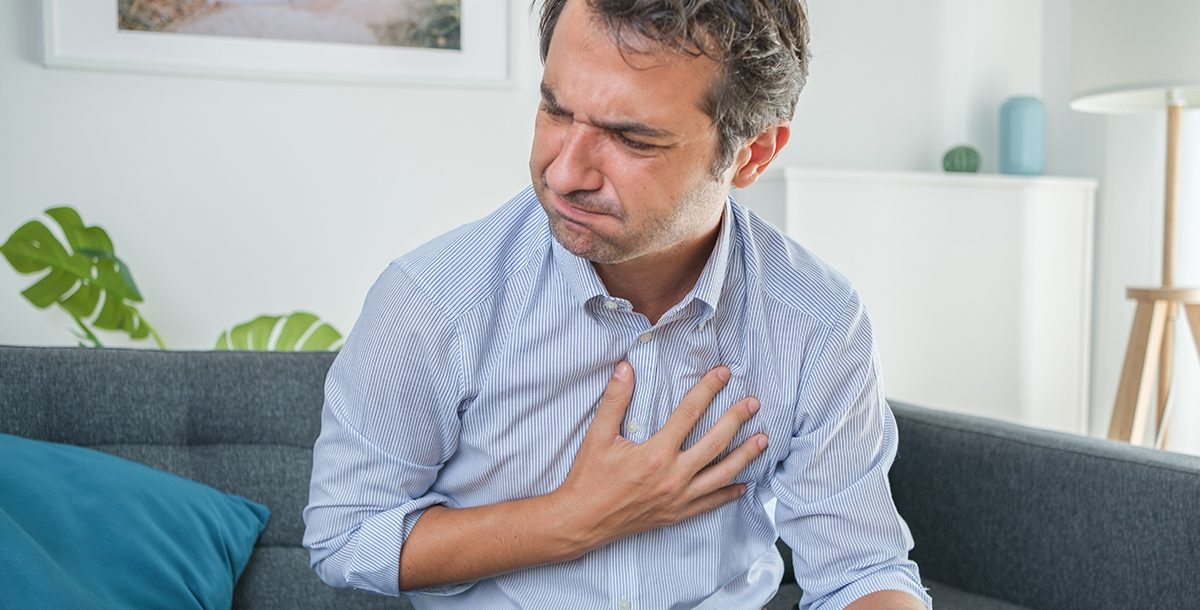Even though it is called heartburn, did you know that it actually has nothing to do with your heart? And what does heartburn feel like?
Heartburn, also called acid reflux, is a gastrointestinal issue that happens when acid from your stomach backtracks into your esophagus, the tube that connects your mouth to your stomach. This typically happens after eating and can cause a painful burning feeling in your upper chest and throat area.
Because your heart is also located in your upper chest area, heartburn symptoms can cause confusion for people. Are you experiencing heartburn? Or are you having a problem with your heart, like a heart attack?
To help you out, let’s dive in deeper and discuss what heartburn specifically feels like.
What causes heartburn?
If you experience heartburn, fear not. It is a common medical condition that many people experience.
When you’re eating, food travels from your mouth to your stomach through your esophagus. Because your stomach contains an acidic mixture that digests food, there is a valve at the bottom of your esophagus called the esophageal sphincter. This valve opens to let food travel into your stomach, and then closes to keep stomach acid out of your esophagus.
However, sometimes this valve doesn’t close properly and some of the acidic mixture from your stomach gets into your esophagus. This is when heartburn happens. Unlike our stomachs, the esophagus isn’t designed to handle this acidic mixture. The acid hurts the esophagus and causes the painful burning feeling that is heartburn.
Again, occasional heartburn after eating is completely normal and can be relieved by taking antacids. However, if you experience heartburn regularly, you’ll want to discuss this with your primary care provider. You could have a more serious condition called gastroesophageal reflux disease (GERD).
What does heartburn feel like?
Simply put, heartburn is an uncomfortable, painful, burning sensation in your upper chest and throat area. But let’s break this down to be a bit more specific.
People who experience heartburn typically describe the following symptoms. And these symptoms can range from mild to severe.
- Discomfort or pain behind the breastbone
- Discomfort or pain in your upper abdomen
- A sour taste in your mouth
- Symptoms that appear 30 to 60 minutes after eating
- Symptoms that are worst after indulging in tea, coffee, chocolate, alcohol and/or tomato sauce
- Pain that gets worse when changing postures, especially after bending forward or lying down
How are heartburn symptoms different from heart attack symptoms?
To make matters more confusing, heartburn can sometimes accompany other symptoms of a heart attack. But that being said, there are symptoms of a heart attack that are different from those of heartburn.
Heart attack-specific symptoms include:
- Tightness or pressure in the chest and/or arms. This sensation can even spread to your back, neck and jaw.
- Shortness of breath
- Cold sweat
- Fatigue
- Suddenly feeling dizzy
Still, the most commonly reported heart attack symptom in both men and women is chest pain. And since chest pain is a main symptom of heartburn, this, unfortunately, leaves room for a lot of grey area.
Are you experiencing chest pain and still not able to determine if it’s heartburn or a heart attack? If so, call 911 or seek treatment at your nearest emergency care facility right away. When it comes to chest pain, it’s better to be safe than sorry.
Learn about the digestive health and primary care services we offer at Bon Secours.





